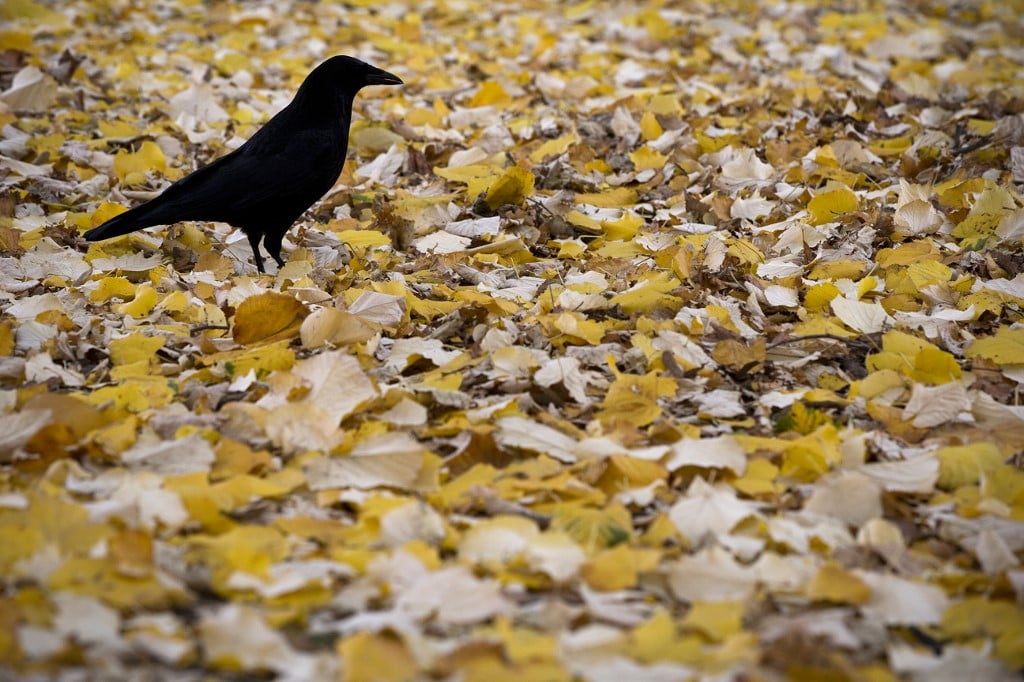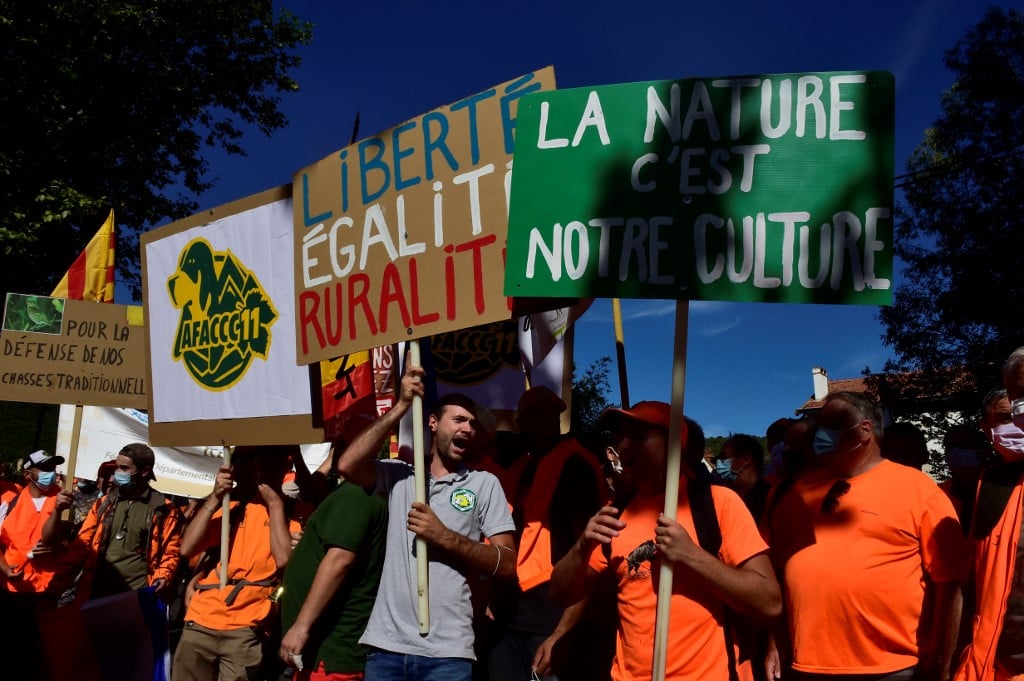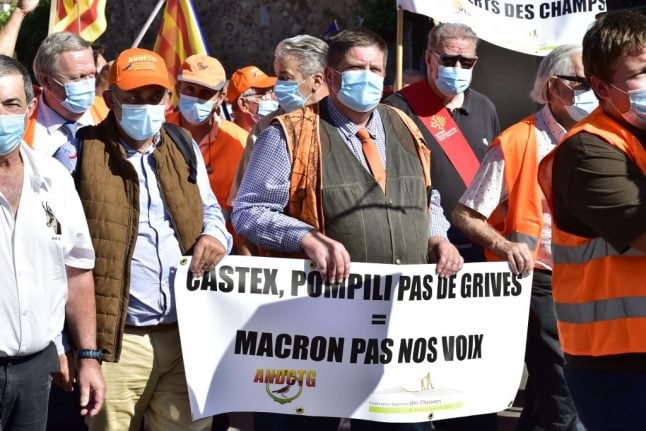In recent weeks France has seen several demonstrations from French hunters, protesting about a suspension of the practice know as chasse à la glu (glue trap hunting).
This hunting technique has been at the heart of disagreements for years, but it has recently come to a head – here's why.
What is chasse à la glu ?
The chasse à la glu or gluau is a hunting technique only practised in certain areas of France, and used from the beginning of October to mid-December.
Sticks coated with glue are put on tree branches in order to trap songbirds, which will then be unglued and caged in order to serve as lures for other birds (which will be shot by hunters).
These lures are called the appellants (callers) and are set free from their cages after the season ends. They are mostly thrushes and blackbirds.

Photo: AFP
The chasse à la glu is still authorised in five southern French départements (Alpes-de-Haute-Provence, Alpes-Maritimes, Bouches-du-Rhône, Var and Vaucluse).
READ ALSO: Opinion: 'Hunting in France is outdated and must be banned'
What’s happening this year?
Though it has been the subject of controversy for years, every year the government gives hunters a quota for “traditional” hunting methods such as chasse à la glu and net hunting.
But this year, there will be no glue trap hunting quota.
“Following an urgent appeal from the National Federation of Hunters, the Council of State rejected, on September 22nd, 2020, this request to reverse the government decision and to set the quotas authorized by decree,” writes the Direction de l’information légale et administrative on the Service Public website.
Why so much controversy around the chasse à la glu?
In 2009 the European Birds Directive forbade the chasse à la glu in all EU countries, but France managed to get a dispensation to still practice it in certain areas.
The directive prohibits “methods of mass or non-selective capture or killing” of birds, in particular hunting with glue, but provides for exemptions when “there is no other satisfactory method”.
Many wildlife and animal welfare groups have denounced the hunting technique as cruel and traumatising for the appellants, which, when set free, suffer from “musculoskeletal system and feather damage” as well as toxicity from the glue and the solvent, according to a report by the National Centre for Veterinary Toxicological Information, relayed by France Info.
The chasse a la glu is also singled out by the French Bird Protection League (BPL) for threatening the lives of endangered species, which might get glued by mistake.
In early 2019 the BPL had declared they had filled a complaint against France to the European Commission after the Council of State rejected their request to refuse France's glue trap hunting exception.
Last July, the European Union’s executive body also threatened France with legal action if the glue traps were not banned within three months.
It was against this background that president Emmanuel Macron decided in August to suspend chasse à la glu in France.
READ ALSO: France's hunting season claims eight lives – and it's only half way through
What do the hunters say?
But for hunters, who had already denounced the BPL for their “unfounded smear campaigns”, the presidential decision is just “unacceptable”, head of the hunters’ federation Willy Schraen told BFMTV.
Willy Schraen: “La chasse a tout à fait sa place dans notre époque” pic.twitter.com/i1h7q4UHsR
— BFMTV (@BFMTV) August 24, 2020
In an interview for hunting website Chassons.com, Head of the Association for the Defence of Traditional Thrush Hunts Eric Camoin said a quota of 22,000 birds to be caught by this method was agreed with PM Jean Castex back in August, before being overturned by Macron.
“We were taken for idiots. The rulers certainly said to themselves, with the economic situation, why bother with 5,000 practitioners,” he said.

Photo: AFP
But a demonstration in the southern French town of Prades (where Jean Castex was mayor before being appointed PM) was not just attended by hunters.
As reports Midi-Libre, wine-growers came to support the marching hunters, saying they had to defend the French rurality which, according to them, is being threatened by the many attacks targeted at hunters.
This is an ongoing complaint in France, where many people who live and work in rural areas feel that their concerns are frequently ignored by the Paris-based government.
So while many people have applauded Macron’s decision – including Environment Minister Barbara Pompili who welcomed the suspension as “a good news for the law and for biodiversity”- he is still facing angry calls to reverse the ban.
L’arrêt de la chasse à la glu, cela fait longtemps qu’on devait le faire, c’est fait. C’est une mise en conformité avec le droit européen et une bonne nouvelle pour la biodiversité. pic.twitter.com/iRNK6Odji0
— Barbara Pompili (@barbarapompili) August 28, 2020
By Gwendoline Gaudicheau



 Please whitelist us to continue reading.
Please whitelist us to continue reading.
Braindead children that call themselves hunters. Try shooting grouse in flight not some poor bird stuck on a stick like something out of a fairground attraction. Pathetic.